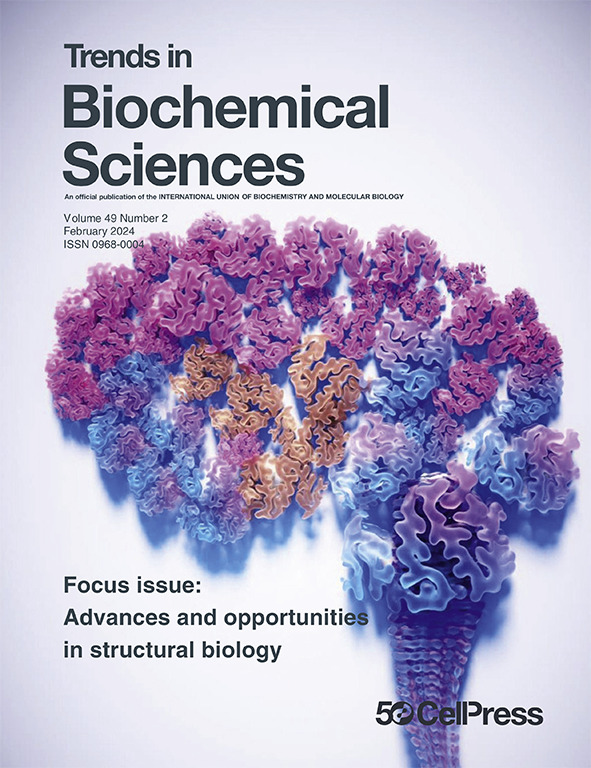作为细胞内组织框架的表面。
IF 11.6
1区 生物学
Q1 BIOCHEMISTRY & MOLECULAR BIOLOGY
引用次数: 0
摘要
活细胞内部的大部分可溶性蛋白质可能会与结构元素(包括蛋白纤维和磷脂膜)发生可逆性结合。在本文中,我们提出了理论和实验证据,证明其中许多结合是由于蛋白质与纤维或膜表面之间的非特异性吸引力造成的,这种结合可能会导致吸附蛋白质的结合状态、吸附蛋白质的生物功能以及这些蛋白质在细胞内存在的许多微环境之间的分布发生重大变化。本文章由计算机程序翻译,如有差异,请以英文原文为准。
Surfaces as frameworks for intracellular organization
A large fraction of soluble protein within the interior of living cells may reversibly associate with structural elements, including proteinaceous fibers and phospholipid membranes. In this opinion, we present theoretical and experimental evidence that many of these associations are due to nonspecific attraction between the protein and the surface of the fiber or membrane, and that such associations may lead to substantial changes in the association state of the adsorbed proteins, the biological function of the adsorbed proteins, and the distribution of these proteins between the many microenvironments existing within the cell.
求助全文
通过发布文献求助,成功后即可免费获取论文全文。
去求助
来源期刊

Trends in Biochemical Sciences
生物-生化与分子生物学
CiteScore
22.90
自引率
0.70%
发文量
148
审稿时长
6-12 weeks
期刊介绍:
For over 40 years, Trends in Biochemical Sciences (TIBS) has been a leading publication keeping readers informed about recent advances in all areas of biochemistry and molecular biology. Through monthly, peer-reviewed issues, TIBS covers a wide range of topics, from traditional subjects like protein structure and function to emerging areas in signaling and metabolism. Articles are curated by the Editor and authored by top researchers in their fields, with a focus on moving beyond simple literature summaries to providing novel insights and perspectives. Each issue primarily features concise and timely Reviews and Opinions, supplemented by shorter articles including Spotlights, Forums, and Technology of the Month, as well as impactful pieces like Science & Society and Scientific Life articles.
 求助内容:
求助内容: 应助结果提醒方式:
应助结果提醒方式:


